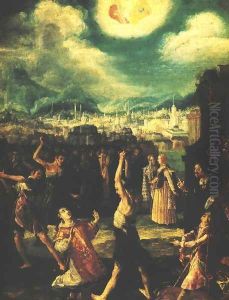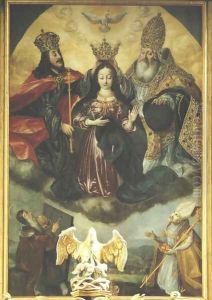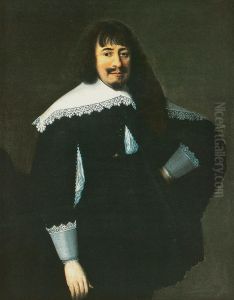Bartlomiej Strobel Paintings
Bartlomiej Strobel, also known as Bartholomäus Strobel or Strobel the Younger, was a Silesian painter born in 1591 in Wroclaw (then Breslau), in the region that is now Poland but was at the time part of the Holy Roman Empire. He is best known for his large-scale history paintings and portraits. Strobel's life and work are emblematic of the cultural and artistic exchanges occurring in Central Europe during the early modern period, shaped by the complexities of political borders and the movement of artists and ideas.
Strobel trained under his father, Bartholomäus Strobel the Elder, who was also a painter. His early works show the influence of the Mannerist style, which was dominant in Silesia at the end of the 16th century. He traveled to Prague, which was a major cultural hub at the time under the reign of Emperor Rudolf II. There, Strobel was exposed to the works of leading artists of the late Renaissance and Mannerism, which had a profound impact on his artistic development.
In 1628, Strobel settled in Danzig (now Gdansk, Poland), where he received commissions from the city's patrician families and the local elite. His work during this period often involved large-scale compositions with numerous figures, complex iconography, and a keen attention to detail. One of his most famous works is 'The Feast of Herod with the Beheading of St. John the Baptist', a monumental painting known for its dramatic composition and dense narrative detail.
Despite the success of his large-scale historical and religious paintings, Strobel's later career was marked by the Thirty Years' War's economic and political disruptions. The war affected the patronage system and the art market, leading to a decline in commissions for artists like Strobel.
The exact date of Strobel's death is not known, but it is believed that he died sometime after 1647. His works are held in various European art collections and continue to be studied for their intricate storytelling and the light they shed on the cultural interactions of the period. Strobel's artistic legacy is particularly significant in the context of Silesian art history and the broader Northern European Renaissance.


